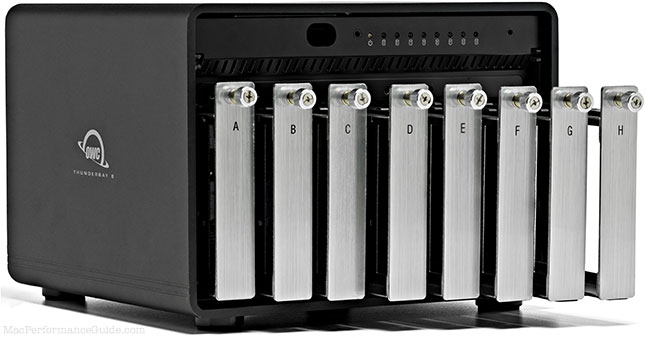
|

$220 SAVE $130 = 37.0% Western Digital 16.0TB Western Digital Ultrastar DC HC550 3.5-in… in Storage: Hard Drives
|

|

|

|

|
Macro and Close-up Shooting, Especially Outdoors
Related: bokeh, depth of field, Eastern Sierra, entrance pupil, external articles by Lloyd, field curvature, flowers, focus stacking, focusing, gear, How-To, macro, peak bagging, Really Right Stuff, shutter, sunstar, tripods and support, Zeiss, ZEISS Lenspire, Zeiss Milvus, Zeiss Milvus 100mm f/2M, Zeiss Milvus 50mm f/2M
by Lloyd Chambers, diglloyd.com

Before starting this article I was a bit apprehensive about the effort required for shooting the images for this article, because my past conception of macro photography was of tedious tripod-based work. Noting my own reactions, I arrived at a solution: to aim this article primarily at macro photography in the field and mostly handheld, and especially what might be done in a spontaneous and serendipitous manner that encourages creative exploration. That is, opposed to still-life or studio macro work, or even using a tripod—commonplace and worthwhile types of macro shooting, but not my thing.
Handheld macro shooting allows for spontaneity and rapid adjustment to conditions, such as wind conditions that constantly disturb plants, insects that alight briefly and depart and so on. Raising the ISO to 400 or 800 or even 3200 even in sunlight allows action-freezing shutter speeds while stopped down, a flexibility never possible with film-based shooting. [See the shooting information for each image caption to get an idea for exposure and ISO details that.] Handheld shooting also addresses another major challenge in the field: very often it can be difficult to find a workable tripod position (I most often shoot in wild areas with challenging terrain).
What I look for in a macro lens
There are many macro lenses on the market, but what I look for in a macro lens is very demanding: a flat field (minimal field curvature), no focus shift, no tricks with focal length shortening, superb bokeh, corner to corner sharpness and a fast aperture (f/2.8 is acceptable, but not nearly as interesting as f/2).
I want strong performance not just at close range, but also at medium and far distances (some macro lenses perform much less well when focused at distance). I don’t want to lug along a specialized macro-only lens just for macro work; it had better be a top performer from 1:2 to infinity focus. Those requirements are exacting, and thus exclude many of the lenses on the market immediately. My all-time favorite macro lens is the Zeiss Milvus 100mm f/2 Makro-Planar and that is why nearly all the images in this article are shot with it. Its Zeiss Milvus 50mm f/2M sibling is also excellent, particularly as a pair of lenses, but the 50mm focal length offers a much closer working distance that is often less useful for macro shooting.
My preferred macro lens is the Milvus 100mm f/2M. It is also superb at distance (sharp corner to corner at f/2) with no field curvature and no focus shift and near-zero distortion. Its bokeh is second to none (see images). Its working distance is just about ideal. No other lens combines those features so well, and as a bonus adds 1:2 macro capability. A big plus for both Zeiss Milvus macro lenses is that both the 50/2M and 100/2M maintain their focal lengths close to nominal—see the graphs.
Bokeh is a key quality characteristic of a lens. While shooting stopped-down tends to subdue most undesirable bokeh effects, some lenses are less attractive stopped down. Moreover, many interesting visual effects are available for the first few apertures. The Milvus 100mm f/2M offers stunning bokeh across its entire aperture range. The only possible gripe is that its 9-bladed aperture has straight blades, so nonagons are formed for out of focus specular highlights. One might wish for an 18-bladed aperture (or at least 14 blades) an upgrade that I’d be in favor of—but that kind of blade count seems to be restricted to high-end cine lenses. Rounded blades are another possibility, but those tend to reduce the ability to making striking sunstars, so I am content with the Milvus diaphragm shape. As seen in the image below, the nonagon shapes for out of focus specular highlights are quite pleasing.
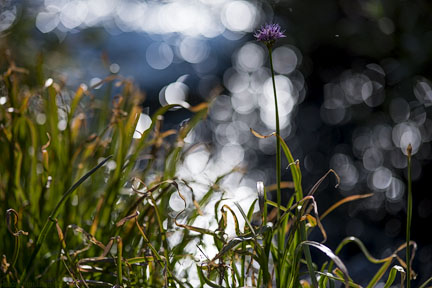
NIKON D810 + Zeiss Milvus 100mm f/2M
[low-res image for bot]
Mesmerizing reflections on the constantly-moving water caught my eye, but I wanted an image with a a striking sunstar as a point of interest. Shooting a dozen or so frames yielded the right combination of water reflections and 18-ray sunstars. Note that ultra-smooth bokeh is retained here, even at f/13. Sunstars might be considered an aspect of bokeh, so all things in context: sunstars and nonagons.

NIKON D810 + Zeiss Milvus 100mm f/2M
[low-res image for bot]
Reproduction ratio aka “how close can I get?”
There are two issues: magnification and working distance. Magnification is quantified as reproduction ratio:
Reproduction Ratio = image size / object size
A reproduction ratio of 1:2 = 0.5 (half life size) means for example that a subject 72mm wide is imaged 36mm wide (36/72 = 1:2) whereas life size of 1:1 means that the image is the same size as the subject. Reproduction ratio is independent of format size, since it is a ratio involving format size.
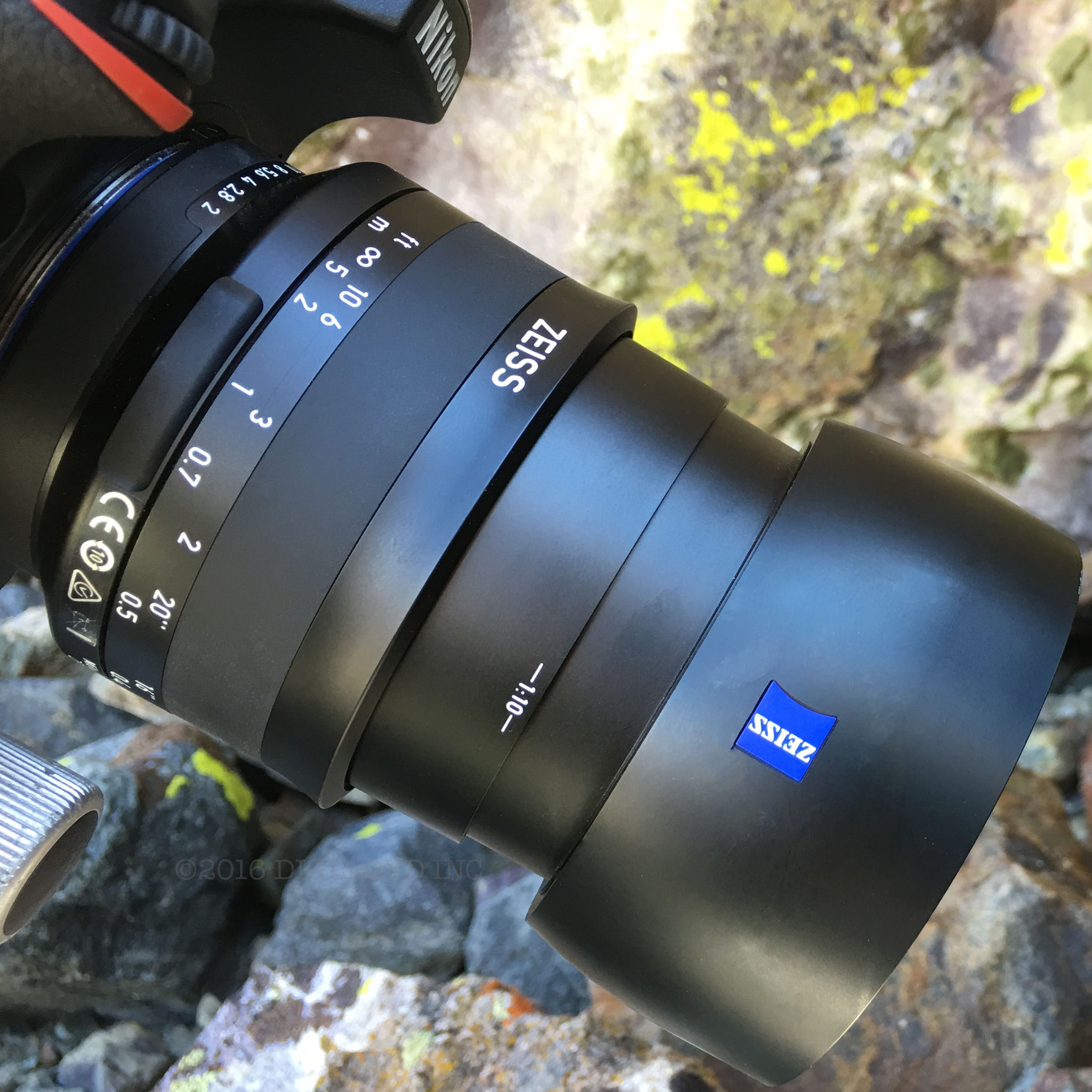
Macro photography as used in this articles means anything from about 1/12 life size (1:12 = .083) to 1:2 (half life size) or more, though at greater than life size the term “micro” comes into play. The 1:12 to 1:2 range stems reflects the fact that most non-macro lenses focus no closer than about 1:7. For example, the Zeiss Otus 85mm f/1.4 APO-Planar goes to 1:7.7, the Zeiss Otus 55/1.4 APO-Distagon goes to 1:6.8. Those figures are typical for lenses in that range, but the Otii maintain extreme quality as well, so for “near macro” work they can work very well. The Zeiss Milvus 135mm f/2 goes to 1:4 with very high quality, which makes it appealing as semi-macro lens for its increased working distance over the Milvus 100/2M when one doesn’t need more than 1:4. However, all of these lenses have more distortion and some degree of field curvature that both exceed the Zeiss Milvus 100/2M.
Specialists in closeup photography might go “micro” to 2:1 (twice life size) or 5:1 (5 times life size) or extreme magnifications beyond. Closeup photography of that sort takes considerable care with lighting and subject setup, specialty lenses and/or bellows setups, and generally requires focus stacking with numerous layers for any appreciable sharpness. This article does not cover this “extreme macro” work, and it field shooting at such ratios would be extremely difficult under most conditions.
For close range work in the field, I find myself working most often in the 1:3 to 1:10 range. Most non-macro lenses cut off most of that range and/or drop in quality in that range, so a macro lens is essential for range and peak performance. Going to 1:2 starts to get more challenging, which is why although a 1:1 macro lens sounds good, it is much harder to work with. Both the Zeiss Milvus 100/2M and 50/2M can get to 1:1 with extension tubes, at least for the ZF.2 lenses.
The Zeiss Milvus macro lenses utilize an elegant approach in which engraved lettering on the lens barrel is hidden at normal focusing range, but revealed as the lens is focused closer. Indeed, this is how I know the reproduction ratio for most of the images shown in this article. Zeiss might have included the effective f-stop and focal length at each of those reproduction ratios somehow, methinks.
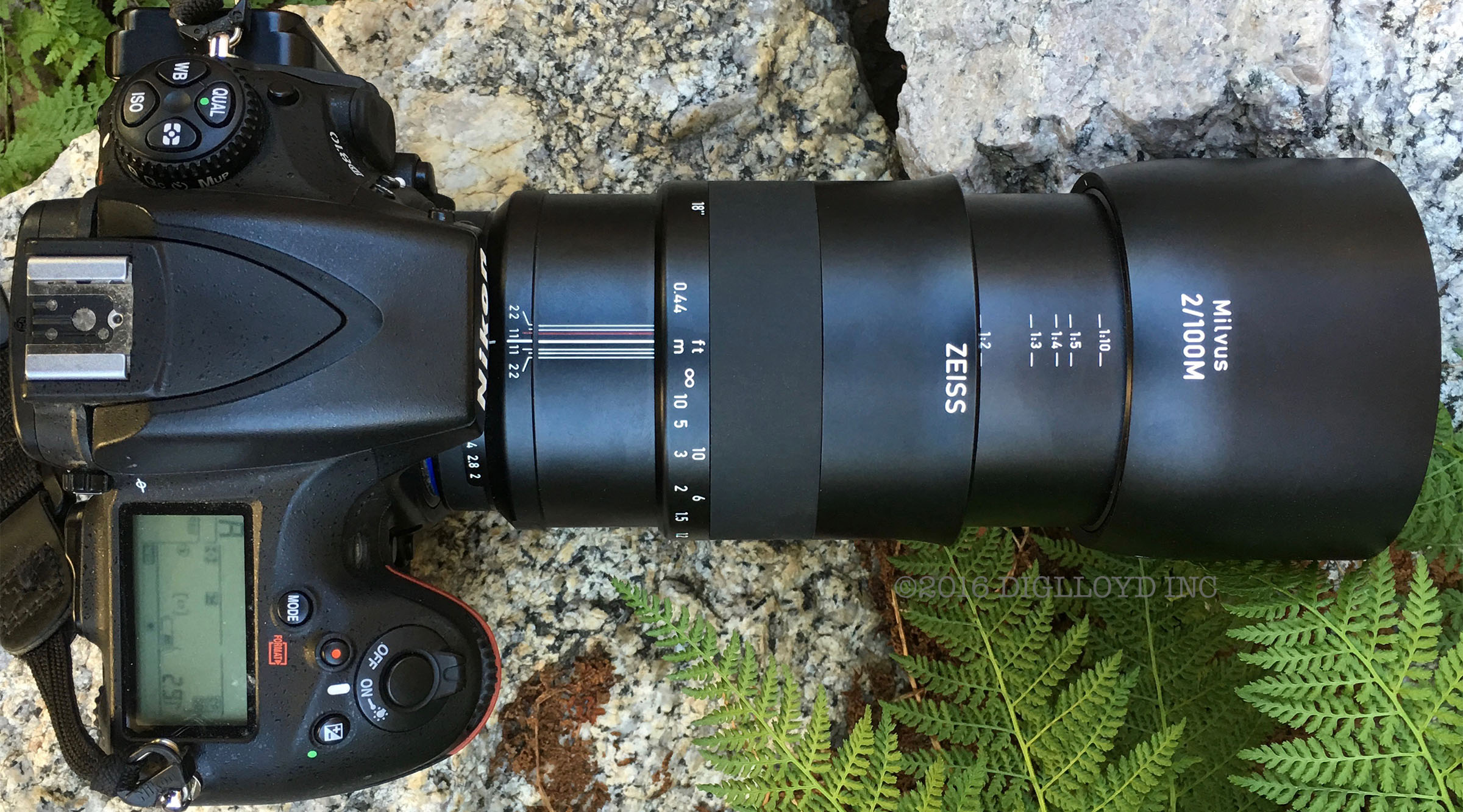
Wide open sharpness and micro contrast matter because it allows faster and more accurate focusing and because many interesting images can be made at full aperture, extending the versatility of the lens. As seen here with the two bees, the Milvus 100mm f/2 can be shot wide open with razor sharp corner sharpness (see crop below). Note the “cat’s eye” bokeh on out of focus specular blurs in the outer zones; this is unavoidable optical vignetting by the lens barrel.
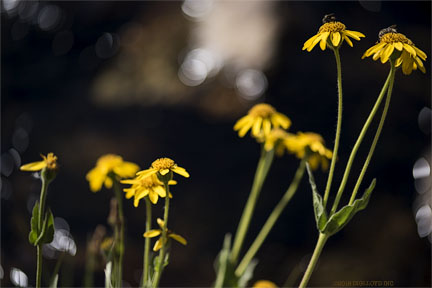
NIKON D810 + Zeiss Milvus 100mm f/2M
[low-res image for bot]
Actual pixels from image below, upper right corner. The lens is actually sharper than this, but focus was off just a hair (literally).
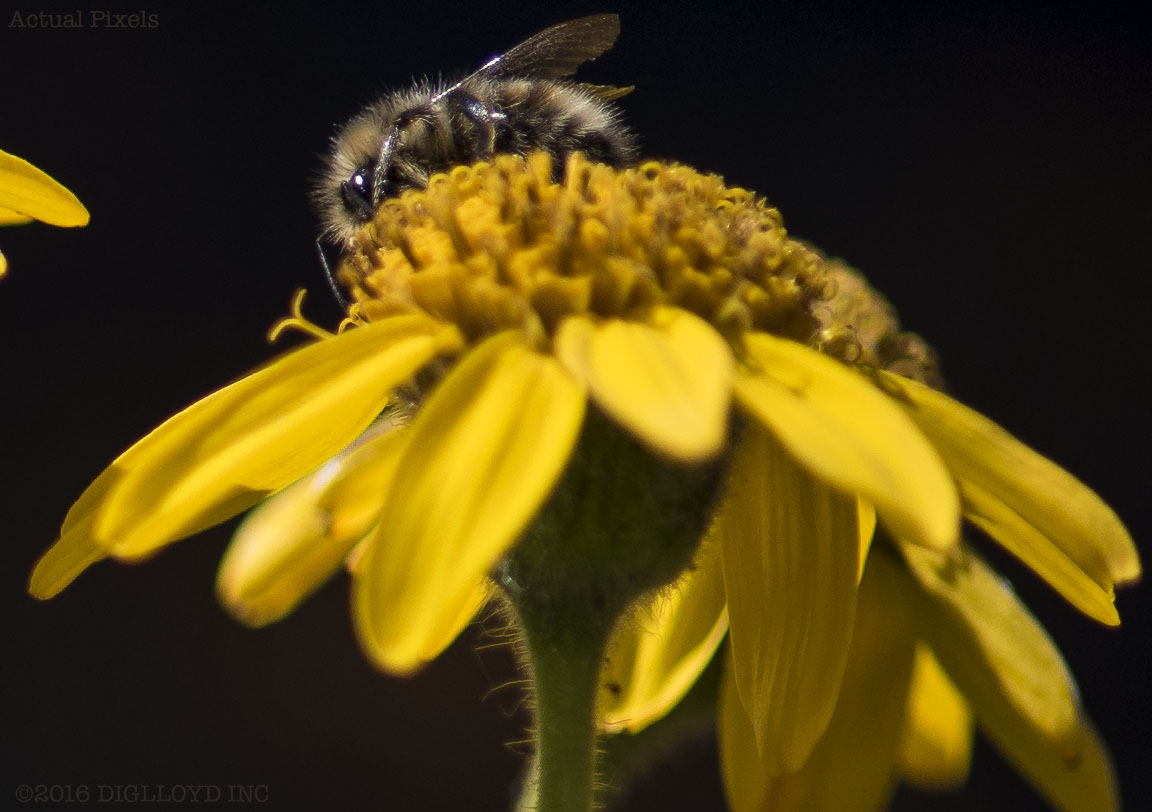
Backlighting can be highly effective, so resistance to flare is critical. The lens coatings on the Milvus 100/2M are excellent as many of the other images also show. Below, I shot five or 6 frames to obtain this image because the wind was sawing the blades around, remaking the composition many times each second. Getting anything predictable was a crap shoot, but handheld shooting makes it quick to make minor adjustments in framing. I liked this arrangement best, though the far right could be cropped off.
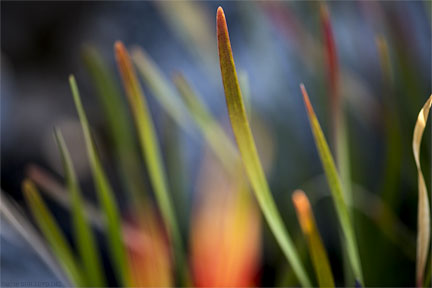
NIKON D810 + Zeiss Milvus 100mm f/2M
[low-res image for bot]
Handheld shooting affords the possibility of quickly moving a bit closer or farther or quickly reframing for background elements. That is particularly useful for bees and other pollinators that often arrive and depart quickly, and are unreceptive to posing suggestions.
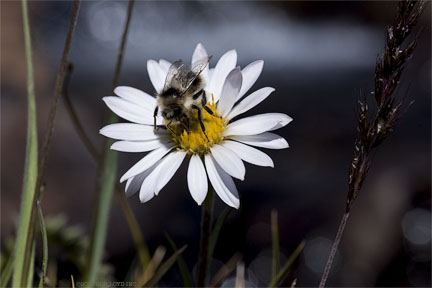
NIKON D810 + Zeiss Milvus 100mm f/2M
[low-res image for bot]
The bright white areas are are strongly out of focus specular highlights (not lens flare), with faint diffraction star effects; the rainbow area might be another such highlight or it might be a flare component—unclear. These sorts of effects can be looked for by changing the camera angle and varying the distance until a pleasing combination is found; handheld shooting is really helpful because such patterns often come and go quickly and/or require very small adjustments to shooting position for composition purposes.

NIKON D810 + Zeiss Milvus 100mm f/2M
[low-res image for bot]
Working distance and perspective
Working distance is a key consideration for macro photography, because the camera/lens can shade the subject (one reason for using a ring flash on the lens). Also, a 100mm lens offers enough additional working distance to get a shot that 50mm might not reach easily, e.g., Wild Onion Flower, Lee Vining Creek wasn’t feasible at 50mm, at least not without removing shoes and taking a big risk among slippery rocks and deep holes between them. Ditto for any critter that might need more distance.
A 50mm macro lens offers half the working distance of a 100mm focal length and in practice even less than that in terms of lighting, because it might not be possible to shoot the subject without blocking the lighting. However, a 50mm lens allows a closer approach, possibly eliminating distracting foreground elements that a 100mm lens would have in its view. But at the same time, the angle of view of a 50mm lens is wider, making isolating a subject less easy.
Another consideration for working distance is the perspective. Perspective is a function of subject distance only; it governs the relative size of objects as discussed in Harnessing Wide Angle Lenses: Perspective and Impact. Using a 100mm lens flattens the perspective because for the same magnification the subject is at twice the distance as 50mm (same considerations as using a 50mm vs 100mm lens for portraits). Therefore, a 50mm lens emphasizes size differences more than a 100mm lens (less “flattening”) and also offers a wider angle of view. The choice of focal length thus entails working distance considerations as well as aesthetic effects.
Positioning for the shot

Pocket Pod with BC-18 head
For handheld shooting, a full-frame camera can deliver good image quality at ISO 800 or even ISO 1600 so that stopping down for depth of field, plus a high shutter speeds are both possible together, at least under reasonably bright conditions. Handheld shooting allows quick changes in distance and angle, so it is the best way to quickly experiment with composition and magnification.
But handheld shooting is not always feasible; often a tripod is required. Especially out in the field, a full-size tripod can be tedious or problematic to work with in getting close to the subject, so certain specialized gear can greatly reduce setup time. Since I normally carry a regular tripod for most of my shooting (Really Right Stuff TVC-24L), a nifty problem-solving add-on is a mini tripod like the Really Right Stuff TFA-01 Ultra Pocket Pod. With it, I can get right down on the ground near the subject with a minimum of setup fuss, and the TFA-01 is small and light enough to be left attached to the camera for moving around. Really Right Stuff has a wide range of macro-specific gear to make just about any shooting scenario more effective, including geared focusing rails and ground pods. Various specialty tripods and macro focusing rails can also help.
Eight-bay Thunderbolt 3 high-performance storage for photo and video.
Hard drives or SSDs.
Non-RAID or RAID-0/1/4/5/10.
Capacities up to 144 Terabytes!
Composing the shot
Often I like to juxtapose near and far in macro shots. That might mean a moderately distant background, or something like mountains, as following images demonstrate.
One approach is a featureless background, but another approach is a background which in itself is interesting, as in White and Yellow Daisy which utilizes sparkling highlights on a fast-flowing stream. As well, and post-shot, I elected to make the flower stand out by leaving only the flower head and petals in color because the flower is what draws the eye as the primary subject.
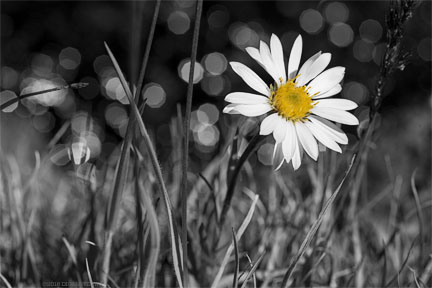
NIKON D810 + Zeiss Milvus 100mm f/2M
[low-res image for bot]
In Flowers and Clouds and Mountains, juxtaposition of very close flowers against distant mountains provides a subtle contextual hint. A blurred plant takes on the look of a reddish bank of clouds in the distance, adding useful ambiguity. The colors are intentionally chosen for their brightness and cheer.
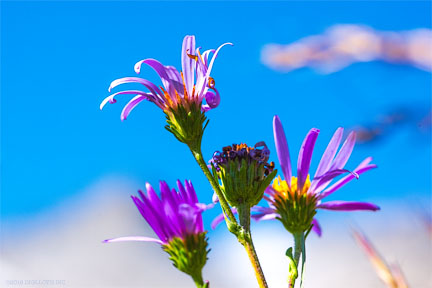
NIKON D810 + Zeiss Milvus 100mm f/2M
[low-res image for bot]
Grass Seedheads is taken at f/2, a choice that leads to intriguing blur effects, particularly at close range in thick cover where it is hopeless to get any depth of field—so why not go with the flow and utilize the blurred areas as subject matter in its own right? Intensely bright but strongly out of focus specular reflections off an alpine lake add a 3D layering effect and sense of depth that combines with the grasses.
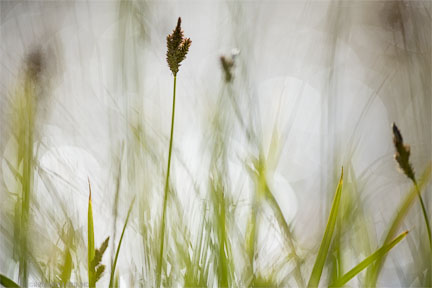
NIKON D810 + Zeiss Milvus 100mm f/2M
[low-res image for bot]
For Wild Onion Flower, Lee Vining Creek in Blue, I sat on a rock in the creek and shot handheld towards the sunlight sparkle. Using a tripod would have been difficult, and the shot would not have been possible with a 50mm lens. But it also mean that I could frame things as desired, which matters a lot here, because those specular highlights were dancing around vigorously.
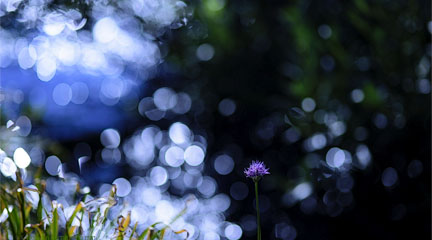
NIKON D810 + Zeiss Milvus 100mm f/2M
[low-res image for bot]
These specular highlights at f/5.6 show the straight-edged 9-bladed diaphragm rendering nonagons. It takes some patience and multiple attempts to obtain a framing and patterns of light that work, since the sparkling surface of the water is in ceaseless motion. I think they add a sense of depth and liveliness to what would otherwise be a static shot of a flower.
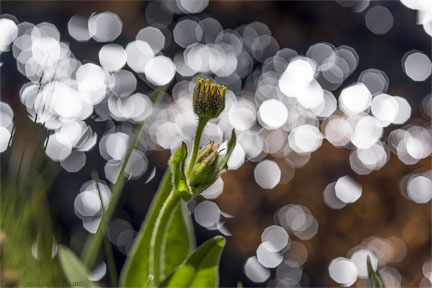
NIKON D810 + Zeiss Milvus 100mm f/2M
[low-res image for bot]
Waving in the breeze, this shot was all about catching a moment, and using f/4 to maintain a large degree of blur which is part of the appeal of the shot: how else to work with intensely bright light off a gneiss boulder? So I went for high-key image. The gorgeous bokeh style of the Milvus 100/2M is evident here—so smooth and velvety—unbeatable.
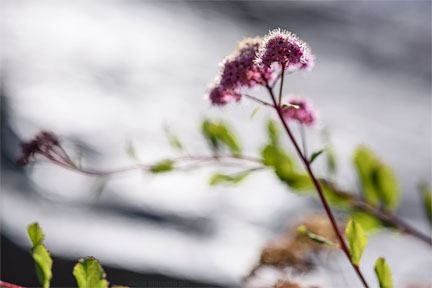
NIKON D810 + Zeiss Milvus 100mm f/2M
[low-res image for bot]
Down low on my belly in the damp moss and grass along an alpine lake. By shooting in color and then using a Photoshop Black and White layer to adjust tonal relationships, an infinite variety of subtle (or dramatic) black and white images can result. Here I opted for a moderate contrast look that emphasizes the out of focus specular blurs of the Zeiss Milvus 100/2M. By using appropriate black and white tonal balancing, the large specular blurs can be suppressed or emphasized; I chose to emphasize them because I liked the overlap with the grasses—round against straight.
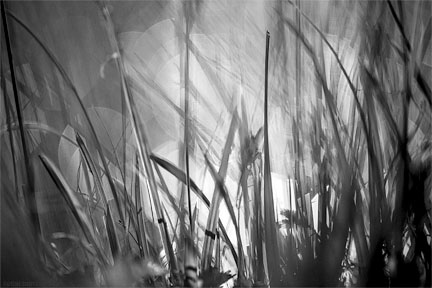
NIKON D810 + Zeiss Milvus 100mm f/2M
[low-res image for bot]
The Zeiss Milvus 100/2M is an unrivalled lens for impressionistic effects. Get close, get low and shoot through the subject into unusual lighting, here the intensively bright specular reflections off an alpine lake. Sharpness is not the goal here, though I tried to have a few things reasonably sharp. It’s more about shape and repetitive forms and implied motion, so the subject does not seem static (note the 1/2500 second shutter speed; there is zero motion blur here).
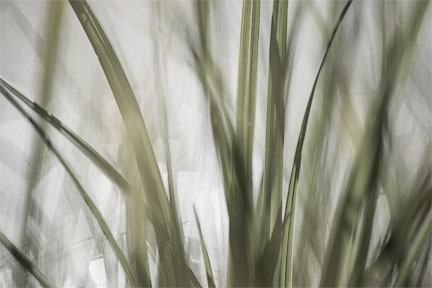
NIKON D810 + Zeiss Milvus 100mm f/2M
[low-res image for bot]
Here I wanted to show a healthy season’s growth in a small pine at 10,000' elevation. While the subject itself is a literal rendering, the gorgeous color nearby was highly attractive and I wanted to incorporate it, but not in any literal sense. The bluish color comes from a shaded gneiss boulder, scrub blueberry bushes provide the red, grasses provide the yellow tones—all set against the green of the pine needles.
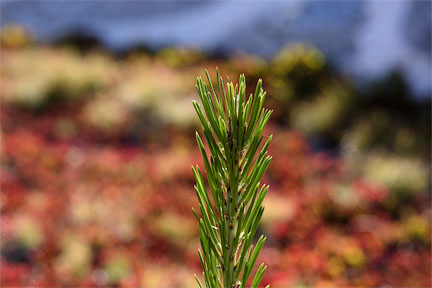
NIKON D810 + Zeiss Milvus 100mm f/2M
[low-res image for bot]
I wanted a close-up of a alpine blueberry plant (I wished for blueberries but none were to be found). When I looked closer, I realized that there was more than a casual walking-height glance shows: a small insect, bites taken out of the leaf, remnants of spider web. This is part of the fun of getting down on one’s belly and seeing what can be found.

NIKON D810 + Zeiss Milvus 100mm f/2M
[low-res image for bot]
It took a few dozen attempts to make this Bubbles image: tripod setup was not feasible, and the bubbles in the creek swirl around very rapidly. I wanted an arrangement of bubbles that was visually interesting, but so fast-moving were they that fractions of a second mattered. Focusing to the surface of the bubble to within a millimeter or so was challenging too (try standing on rocks midstream!)—most attempts were failures, being out of focus or out of plane with the water.
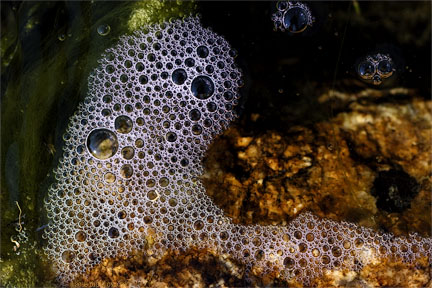
NIKON D810 + Zeiss Milvus 100mm f/2M
[low-res image for bot]
Not until I made this image did I realize the 3D surface of the water: the naked eye cannot see the wave patterns because the movement is much to fast. Using ISO 1600 in full sunlight was needed to be able to shoot at f/16 for this darker subject, and it still required 8/10 stop “push” in raw conversion.
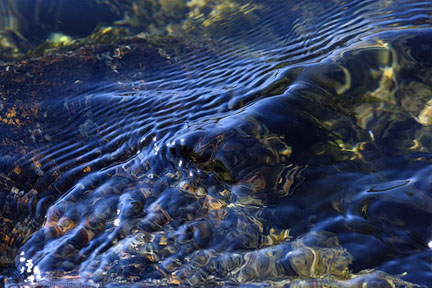
NIKON D810 + Zeiss Milvus 100mm f/2M
[low-res image for bot]
The tricky part of shooting at around 1:2 is getting the focus to within a millimeter or less—not so easy while shooting handheld, even if the flower is still. This classic macro shot is a literal rendition that is pretty by taking advantage of symmetry and pleasing bokeh.
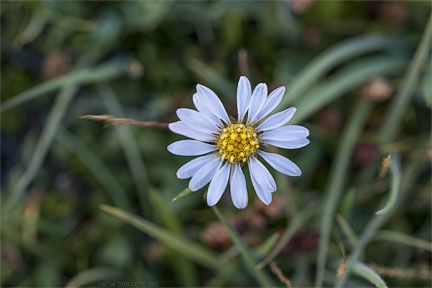
NIKON D810 + Zeiss Milvus 100mm f/2M
[low-res image for bot]
Focus stacking
Sometimes depth of field is just too limited to make a useful image. This is a 4-frame focus stacked image at f/14 of what appear to be appears to be Mimulus Guttatus, found growing at about 10,500 ft elevation along a trickle of snowmelt. Even at f/14 a single frame yielded a completely blurred background when focused on the flower; this “short stack” pulls in the leading areas of the background and does not attempt to make the everything sharp, just the flowers and most of the leaves.
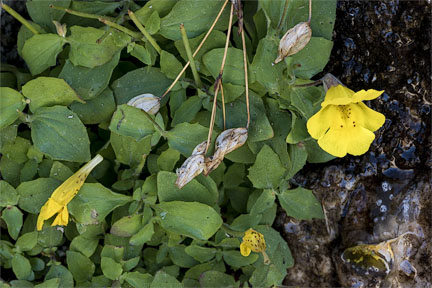
NIKON D810 + Zeiss Milvus 100mm f/2M
[low-res image for bot]
Zeiss Milvus macro lenses
The Zeiss Milvus 50mm f/2M and Zeiss Milvus 100mm f/2M both focus to 1:2 (half life size). It is possible to mount the Milvus ZF.2-model macro lenses on one or more Nikon extension tubes for the Nikon-mount ZF.2 models, bringing reproduction much closer to 1:1.
The charts below can be useful for technical macro work, but are shown here mainly to show the behavior which many macro lenses lack. Both the Zeiss Milvus 50/2M and Zeiss Milvus 100/2M maintain their focal lengths reasonably close to nominal from 1:2 to far distance—and thus the working distance and field of view. This is a big deal because many if not most autofocus macros lenses dramatically reduce focal length when focused to closer range (in order to maintain a constant aperture). That kind of lens behavior affects both working distance and angle of view, a practical hassle for many types of work.
Observe that at close range, both Zeiss Milvus macro lenses actually increase their focal length slightly, which is a plus for working distance and a narrower angle of view.
Horizontal axis = focus distance (left is more magnification).
Vertical axes are focal length and entrance pupil position.

Horizontal scale: focus distance in cm. Vertical scales: focal length and entrance pupil offset
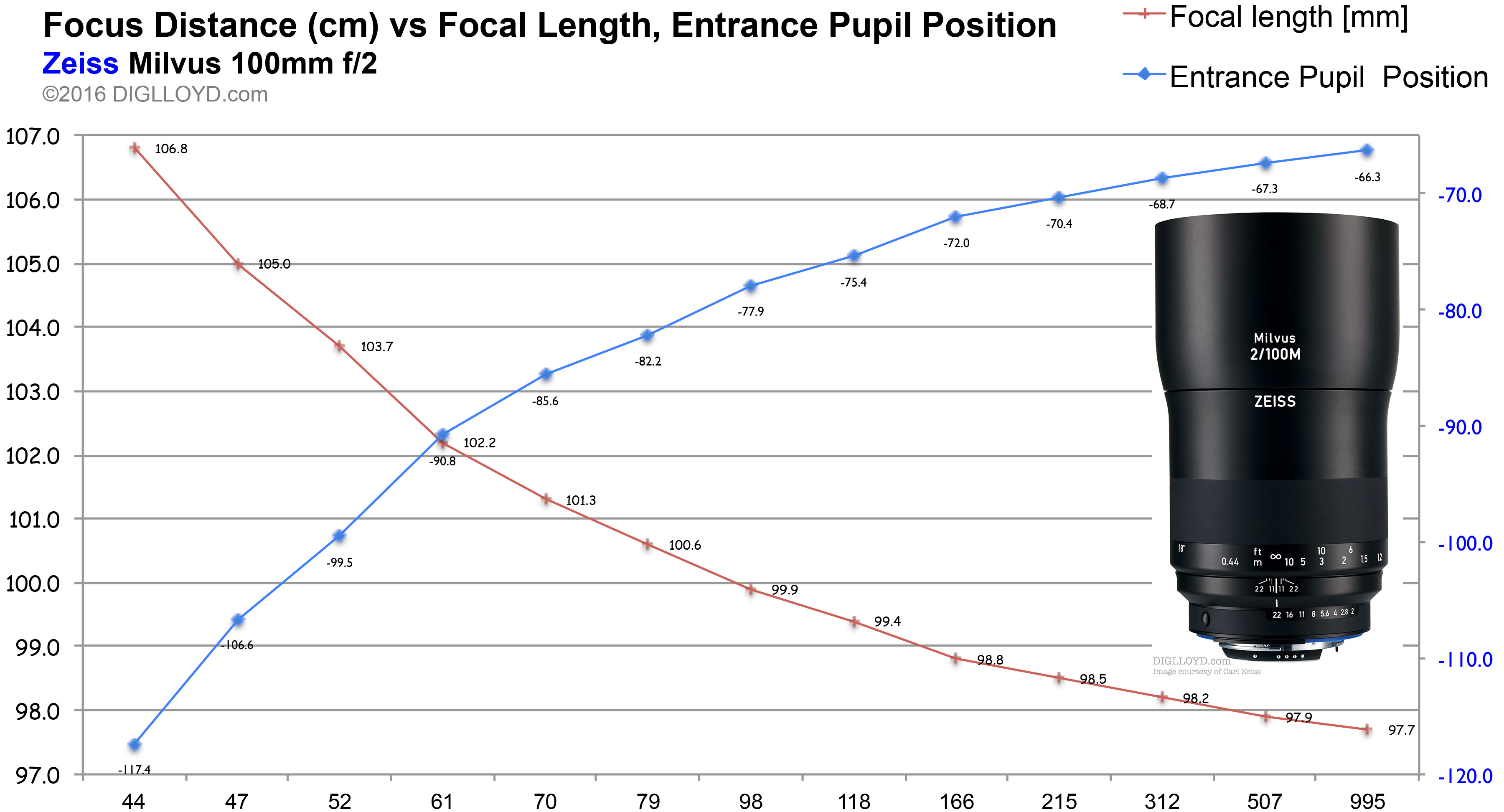
Horizontal scale: focus distance in cm. Vertical scales: focal length and entrance pupil offset
Summary
Macro photography need not be about stopping down for depth of field or focus stacking, or shooting on a tripod, or literal rendition of a bug or flower , although all those have a valued place. Try handheld macro: look for unusual natural backgrounds, lens bokeh, specular highlights and unusual color arrangements. Juxtapose near and far. Get outside, get down low on the ground, and see what comes your way with a good macro lens.

- Simplify: use background blur, field of view and angle to select-out only what is needed.
- Background creativity: plain backdrops have their place, but try blue sky or mountains or a creek or even a crowd of people or row of buildings: juxtapose near and far.
- Angle: shoot higher, shoot lower, shoot straight-on, shoot obliquely. Small changes in position and angle have big effects on background look and feel, so explore, placing very distant subjects in the background for very close ones (for example).
- Depth of field: minimize it and make the image based on light and shadow and form, or increase it by stopping down or maximize it via focus stacking when needed. Don’t get stuck in an 'aperturut'.
- Focusing: at moderate to high magnification, autofocus can be a losing proposition, because the focus will not be exactly where desired (just 0.5mm is a big deal with macro). Not to mention autofocus “hunting” behaviors. A manual focus lens with a helicoid focus like the Zeiss Milvus macro lenses allows pre-focusing and extremely precise focusing, such as with magnified Live View with a high-quality focusing loupe.
- Exposure: lens speed can change with focusing distance, and flash photography can be tricky: use the camera’s histogram to be sure that a well exposed image has been captured.
- Perspective: many macro shoots look very similar in perspective, since most macro lenses are in the 100mm range. Try shooting with a 50mm or wider lens for different effects, not just a longer 100mm or similar lens. A 50mm + 100mm pairing is very worthwhile.
- Lighting: consider carrying a collapsible reflector and diffuser in the field.
Lloyd’s photography blog is found at diglloyd.com; it covers many brands, lenses, cameras. In-depth review coverage of the Zeiss DSLR lenses for Canon and Nikon is found in Guide to Zeiss and in Guide to Mirrorless for Sony. By subscription.
Seagate 22TB IronWolf Pro 7200 rpm SATA III 3.5" Internal NAS HDD (CMR)
SAVE $100
















